 Digital Camera Buying Guide - More Choosing
Digital Camera Buying Guide - More Choosing
Digital Camera Choosing
Continue reading this page to learn more about choosing between digital cameras. For more important factors, go back to Digital Camera Choosing Basics, step 2 of this Digital Camera Buying Guide.
Memory
There are quite a few types of memory cards, which is where all modern cameras store the photos and video they capture. The SD-HC format is by far the most common one and is also the cheapest per capacity. Just a few non-DSLRs will not accept SD-HC cards and entry to mid-range DSLRs as well. The high-end memory is still Compact Flash due to its potential for fast transfer speeds and high capacities.
Current prices for memory cards are sufficiently low that one should not give much importance to which memory card type a digital camera uses. There are far more important features to choose!
| Compact flash memory is realively cheap, it is available in the largest capacities and the fastest speeds. | |
| Some cameras only accept Type 1 Compact Flash cards, which are slimmer than Type II cards. This effectively means no MicrodrivesMicrodrives are tiny hard drives. They used to be quite economical and available in large capacities, this is no longer the case. Microdrives are more fragile than memory cards and cannot operate above 10,000ft of altitude.. | |
| CFast is the original Compact Flash successor and based on the SATA disk interface. A CFast card is essentially a tiny SSD which offers similarly fast speeds, from 600 MB/s for reading and 150 MB/s for writing. | |
| This second Compact Flash successor uses a high-speed interface and a smaller form-factor similar to SD cards. It offers faster speeds than Compact Flash, from 500 MB/s for reading and 125 MB/s for writing. | |
| SD memory is very common and has the widest compatibility among devices such as digital photo-frames, card-readers and laptops. | |
| SD-HC cards are high-capacity SD cards which are generally not compatible with SD devices. SD cards can always be used where SD-HC cards are accepted. SD-HC are now the cheapest memory cards and are the most commonly accepted among digital cameras. | |
| SD-XC cards are extended capacity SD-HC cards that support sizes above 32GB, theoretically up to 2 TB. Any camera which accepts SD-XC cards will accept SD-HC and SD cards as well. The reverse is not true though, so SD-XC cards are only accepted in SD-XC compatible cameras and devices. | |
| Micro SD-HC cards are small versions of SD-HC cards. Originally used in cellular phones, some cameras come with adaptors to use a Micro SDHC card instead of their native memory type. | |
| Micro SD-XC cards are small versions of SD-XC cards. Although mostly common in cellular phones, some ultra-compact digital cameras accept this type of memory too. | |
| xD can be found in Olympus and Fuji cameras, it is one of the most expensive memories, limited in capacity and rather slow. Modenn Fuji cameras either accept both xD and SD-HC or only SD-HC. Certain Olympus cameras take Micro-SD cards using an adapter which fits in the xD slot. | |
| Memory Stick are used by Sony cameras and are also quite expensive. The Pro version is faster but otherwise identical. | |
| Memory Stick Duo is simply a smaller versionA Memory Stick Duo can be used in a Memory Stick slot using an adapter but not vice-versa. of the Memory Stick. There is also a faster Pro version. |
Viewfinders
Digital cameras preview images either using an LCD screen or a kind of viewfinder. LCD displays can be hard to see in bright light due to unwanted reflexions and exposure to direct sunlight. A viewfinder is preferable but rarely available on small cameras, particularly ultra-compact models. The general advantages of a viewfinder are that it rarely reflects stray light and it provides an extra point of stability for precise framing. Many types of viewfinders exist:
 Electronic viewfinders are tiny LCD displays that preview the image as seen by the sensor. They can be extremely accurate in terms of exposure, color, white-balance and framing. Except for those used by now-defunct Konica-Minolta, they are hard to see in low-light. Top of the line EVFs currently have enough precision to judge focus.
Electronic viewfinders are tiny LCD displays that preview the image as seen by the sensor. They can be extremely accurate in terms of exposure, color, white-balance and framing. Except for those used by now-defunct Konica-Minolta, they are hard to see in low-light. Top of the line EVFs currently have enough precision to judge focus.- An optical reflex viewfinder is highly recommended for night photography and continuous shooting. Judging focus is rather easy with a reflex viewfinder which is needed for precise manual focusing. On the other hand, optical viewfinders do not preview exposure, color or white-balance.
- An optical tunnel is formed using a second lens above the camera's photographic lens. It is sometimes but rarely seen on compact digital cameras. This allows coarse framing when the LCD is not usuable due to movement or bright light.
Viewfinder Details
- Viewfinder Coverage is the visible percentage of the final picture. The closer to 100% the better. Most EVFs and LCDs show 100% coverage but optical viewfinders generally only show 95% coverage. 100% coverage viewfinders are found on most high-end DSLRs since they are essential to professionals.
- A higher magnification viewfinder shows a larger view and is preferable. It allows more comfortable viewing of the subject and better judement for focus and depth-of-field.
Batteries
![]() Standard size batteries such as "AA" are highly preferable:
Standard size batteries such as "AA" are highly preferable:
- They cost considerably less than any other type of battery.
- These batteries can easily be replaced by disposable ones found almost anywhere in the world.
- AAs keep getting better. Year-after-year, manufacturers produce more powerful and longer lasting versions.
- Solar-chargers are readily available.
Custom Lithium-Ion batteries may last longer than a single set of rechargeable AA batteries but you can afford several sets of AAs for the same price as a one Lithium-Ion battery. Plus, in an emergency it would be nearly impossible to find the right battery since there are so many different models.
Avoid cameras that charge in docks, you cannot use those cameras while recharging them unless the dock can charge a spare too. Charger docks are also an extra thing to carry while traveling.
Weather & Underwater
![]() Weatherproof cameras are designed to withstand adverse weather without actually being submerged under water. They can easily stand rain, snow and dust. Note that a weather-sealed DSLR requires the use of a weather-sealed lens to remain weather-sealed.
Weatherproof cameras are designed to withstand adverse weather without actually being submerged under water. They can easily stand rain, snow and dust. Note that a weather-sealed DSLR requires the use of a weather-sealed lens to remain weather-sealed.
![]() Waterproof cameras can actually be submerged under water up to a maximum depth dictated by the camera specifications. This is usually between 3m (10') and 10m (33'), so this is usable for swimming and snorkeling but not for SCUBA diving.
Waterproof cameras can actually be submerged under water up to a maximum depth dictated by the camera specifications. This is usually between 3m (10') and 10m (33'), so this is usable for swimming and snorkeling but not for SCUBA diving.
The general solution for deep immersion is to use a specially designed underwater casing. Those are almost always model specific, so if this is a requirement, you must check for availability before deciding on a camera.
Next
Proceed to Step 3 to look at Digital Camera Models. If you realized that a DSLR would be better for your needs, read the DSLR Buying Guide or skip to Step 4 to choose between all current DSLR Models.
Please Support Neocamera
All information on Neocamera is provided free of charge yet running this website is a huge endeavor. Purchases made via affiliate links found throughout the site help keep it running and up-to-date. There is no additional cost to you, so please consider buying via these links to our affilates:
If you found any information on this site valuable and did not purchase via our affiliate links, please considering donating via PayPal:
Any amount will be greatly appreaciated. Thank you for your support!
New Cameras & Lenses
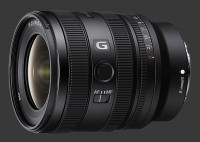
Sony FE 16-25mm F/2.8G
Weatherproof
Sony E Mount Zoom
2024-04-16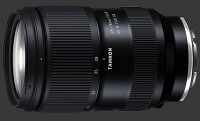
Tamron Di III 28-75mm F/2.8 VXD G2
Weatherproof
Nikon Z Mount Zoom
2024-03-28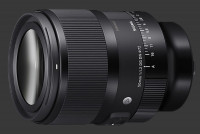
Sigma A 50mm F/1.2 DG DN
Weatherproof
Sony E Mount Prime Lens
2024-03-27
Sigma A 50mm F/1.2 DG DN
Weatherproof
Leica L Mount Prime Lens
2024-03-27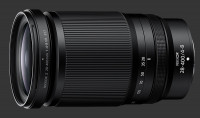
Nikkor Z 28-400mm F/4-8 VR
Stabilization & Weatherproof
Nikon Z Mount Zoom
2024-03-27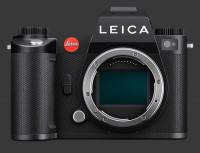
Leica SL3
60 Megapixels Mirrorless
Leica L Lens Mount
Built-in Stabilization
Weatherproof down to -10C
2024-03-07
Updates
2024.04.03

Fujifilm X-T5 Review
Newest Fujifilm flagship boasting a 40 MP APS-C sensor, 5-axis IBIS with 7-stop efficiency, 15 FPS continuous drive, 6.2K Video capture, dual control-dials and dual SDXC UHS-II slots in a sturdy weatherproof and freezeproof body.
2023.11.20

Best Digital Cameras of 2023
Find out which are the Best Digital Cameras of 2023. All the new Mirrorless Digital Cameras from entry-level to high-end professional.
2023.07.10

Fujifilm X-H2 Review
40 Megapixels APS-C Hybrid Mirrorless Digital Camera with 7-stop IBIS. Fastest shutter ever and 8K video capture. Large builtin EVF with 0.8X magnification and 5.8 MP, plus an Eye-Start Sensor. Packed with features and large number of controls in a weatherproof and freezeproof body.
2023.05.07

Sony FE 20-70mm F/4G Review
Review of the unique Sony FE 20-70mm F/4G lens. The optical zoom of this lens spans ultra-wide-angle and medium focal-length coverage, making it one of the most versatile Full-Frame lenses on the market.
2023.01.15

Huion Inspiroy Dial 2 Review
Review of the Huion Inspiroy Dial 2 tablet, a medium sized drawing surface with dual dials and customizable buttons. Connects via USB-C or Bluetooth 5.0 with Windows, Linux and Android support.
2022.12.08

How to Pack for a Photo Trip
Find out how to pack for a travel photography trip, carry your gear safely while meeting airline regulations.
2022.11.13

Best Digital Cameras of 2022
The best digital cameras of 2022. A short list of the most outstanding models in their respective categories. Choose one for yourself or as a gift.
2022.09.21

Pentax DA* 60-250mm F/4 SDM Review
Review of the Pentax DA* 60-250mm F/4 SDM, the constant-aperture telephoto zoom with the highest zoom-ratio on the market.
2022.09.20

Pentax DA* 50-135mm F/2.8 SDM Review
Review of the Pentax DA* 50-135mm F/2.8 SDM, the lightest professional telephoto zoom native to the K-mount.
2022.09.10

Pentax DA* 11-18mm F/2.8 DC AW Review
Review of the Pentax DA* 11-18mm F/2.8 DC AW, the widest professional ultra-wide zoom native to the K-mount.
2021.11.24

50 Gifts Under $50 For Photographers in 2021
50 Gifts photographers will love. All for under $50 USD. 2021 Edition.
2021.11.17

Best Digital Cameras for 2021
Neocamera shows which are the very best Digital Cameras for 2021 in every category: Mirrorless, DSLR, Premium Compact, Ultra-Zoom and Rugged.








